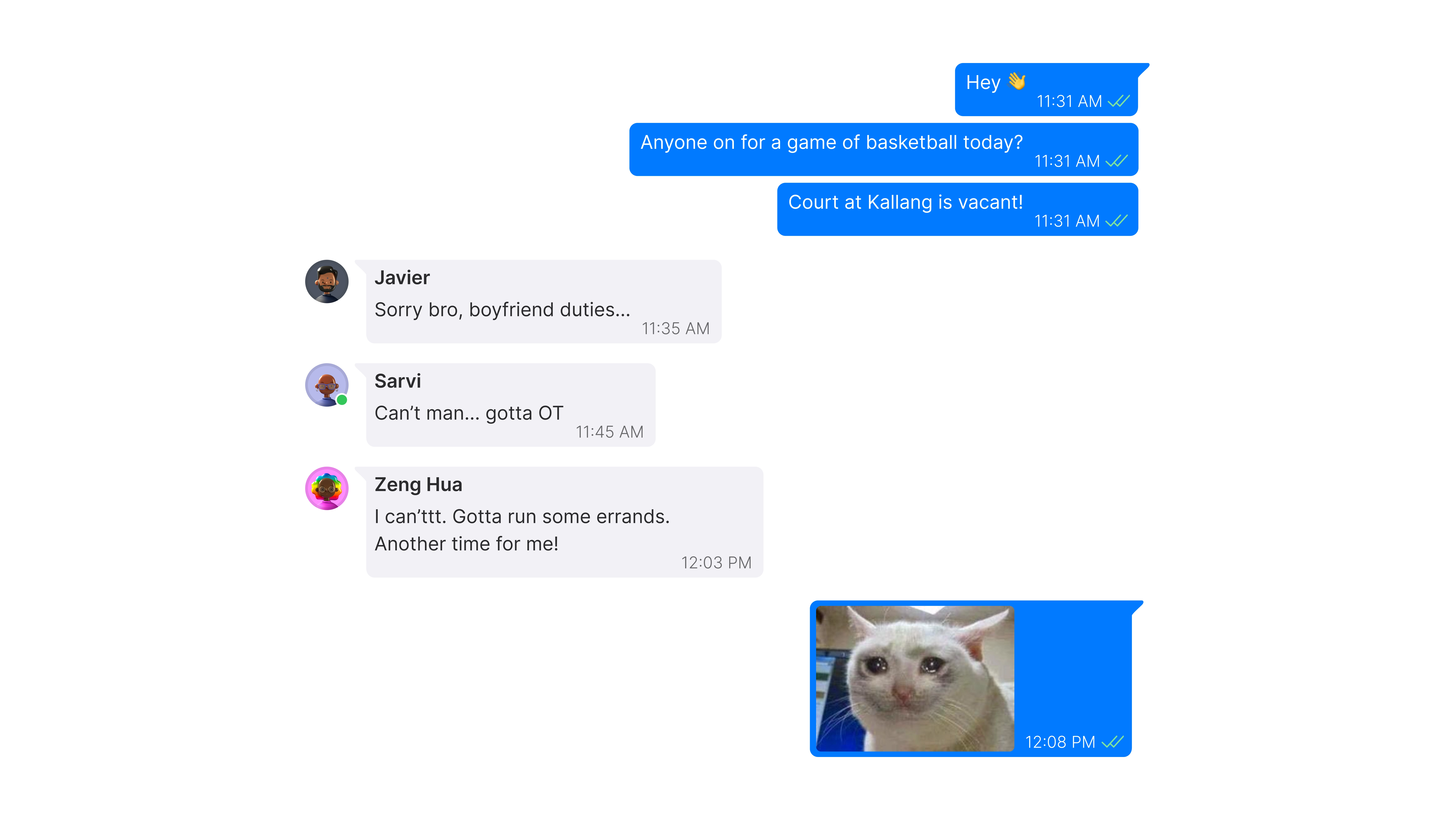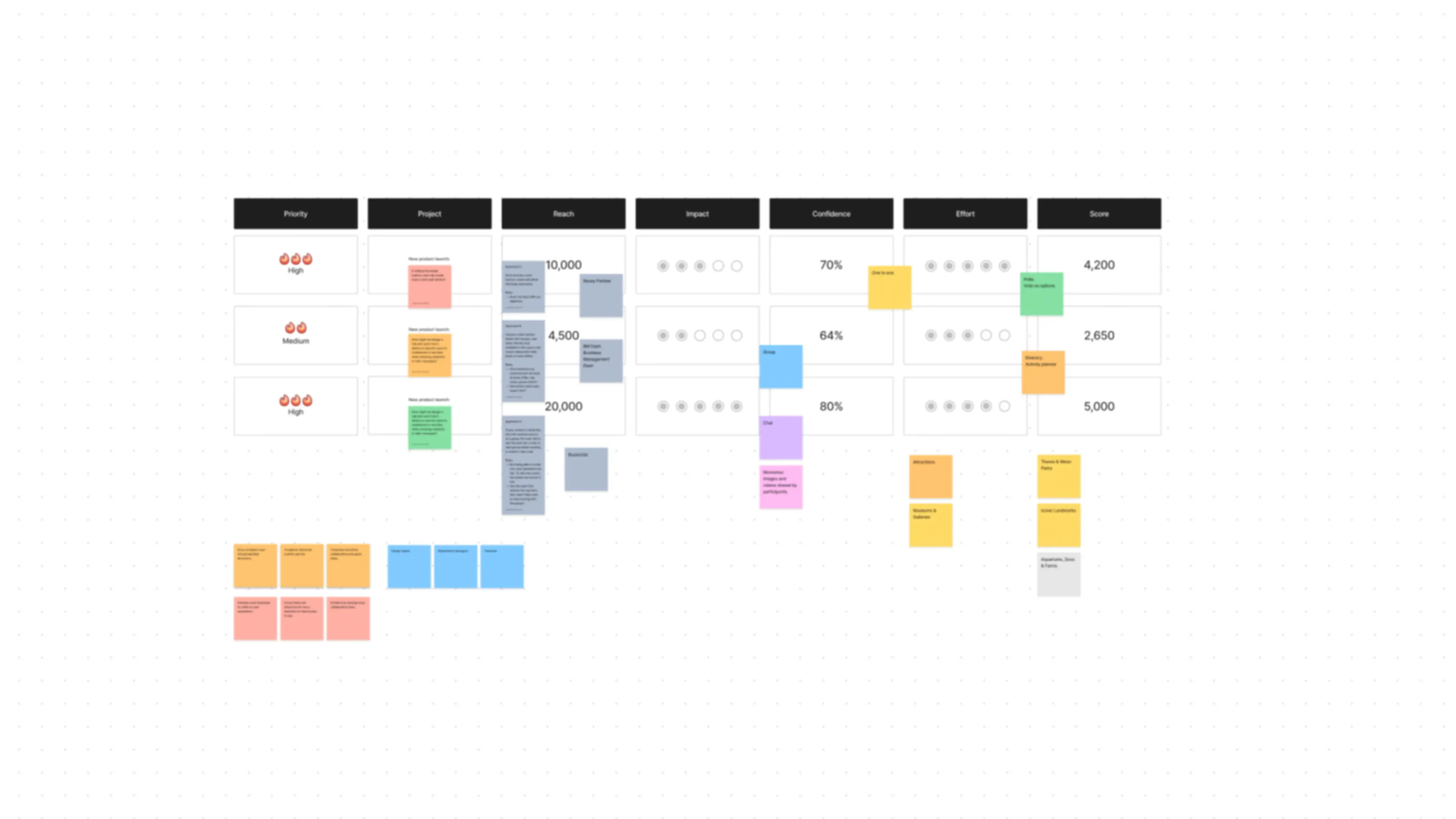social sports app
splink — october 2021


App showcase
App motion concept
Early app promotional video
An idea fresh from a venture-building programme.
Filled with uncertainties ft. my first ever product role.

Splink founding team
Finding sports partners can be very challenging.
Like going on a date, it is tedious and nerve-wrecking.

Trying to find people to play sports be like...
Clearing the fog for areas of opportunity.
All the ways players currently use to play sports.

A common way users use to find partners was Facebook
More than one type of sports enthusiast.

Spectrum of sports enthusiasts
Creating stable momentum internally.
Using frameworks to prioritise ideas and features.

Using KANO to prioritise ideas
Constant jams and documenting to establish alignment.

One of our internal Notion dashboard
Turning insights into tangible experiences; a design exploration summary.
Create and browse activity with ease.
Browsing activity experience

Match Make feature

Activity post feature
Gauge potential partner's skill with sports highlights video.

Various sports skill videos
Match and meet with like-minded sports players.

Personality quiz and matching
Yes, be fast, but thoughtful—ensuring quality and accessibility.
Constant and rapid usability tests with users.

Usability test session with a beta user online

Focus group experience test session
Documenting designs for developer handoff.

Handoff document for a feature
Great progress and an awesome validation outlook, a new feature line-up awaits!
A new way to engage with Splink and boosting user retention.

All new way to discover activities
Clubs for users looking to organise and play frequently.

Introduction of clubs with club chat
Parallel projects I worked on behind-the-scenes that are worth mentioning.
Marketing and design system initiatives.

Unreleased Sport Light initiative

Laying the foundation of our early design system
A poignant farewell.
It was really... bittersweet...

A tribute to our team.
